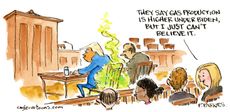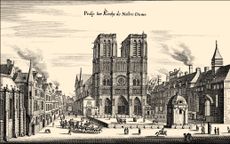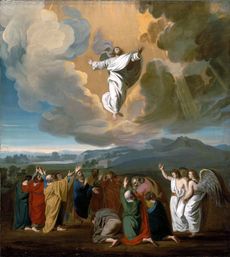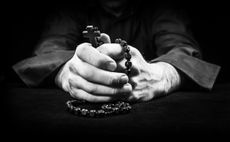Being Muslim in America
Islam in the U.S. has a long, rich history, but fears of terrorism complicate the future. Here's everything you need to know.

Islam in the U.S. has a long, rich history, but fears of terrorism complicate the future. Here's everything you need to know:
How many Americans are Muslims?
The Pew Research Center estimates that 3.3 million Muslims live in the U.S., which makes Islam the nation's third-largest faith, behind Christianity and Judaism. It's a diverse population primarily divided among African-Americans, South Asians, and Arabs, and a well-educated one: About 40 percent of U.S. Muslims hold college degrees, as opposed to 29 percent of Americans overall. Though Muslims represent 1 percent of the population, they account for 10 percent of the nation's physicians, and have included such distinguished figures as boxer Muhammad Ali, urban architect Fazlur Khan, and cardiothoracic surgeon and TV personality Mehmet Oz. But since the Sept. 11 attacks, American Muslims have been widely viewed with suspicion, which has intensified with the rise of ISIS and terrorist attacks in San Bernardino, Orlando, and Europe. American Muslims resent being blamed for the horrific acts of a few extremists. "Muslims are not the Other," says Purdue University professor Su'ad Abdul Khabeer. "We're Americans whose history begins with the history of the country."
Subscribe to The Week
Escape your echo chamber. Get the facts behind the news, plus analysis from multiple perspectives.

Sign up for The Week's Free Newsletters
From our morning news briefing to a weekly Good News Newsletter, get the best of The Week delivered directly to your inbox.
From our morning news briefing to a weekly Good News Newsletter, get the best of The Week delivered directly to your inbox.
When did Islam first come to America?
The earliest known Muslim to appear on the continent was a Moroccan slave, Estevanico, who was shipwrecked with Spaniards off present-day Galveston, Texas, in 1528 and helped explore the American Southwest. As many as 30 percent of Africans enslaved in the U.S. were Muslim. In the late 19th and early 20th centuries, Muslim immigrants arrived from Turkey, Syria, and Lebanon, largely settling in the Midwest; later waves came from Bosnia, Albania, and other parts of Europe. In the 1960s, the Muslim population began to swell as the government lifted immigration quotas and many African-Americans began converting to Islam. Muslim immigration surged at century's end — 45 percent of today's Muslim-Americans arrived after 1990; between 1994 and 2011 the number of U.S. mosques more than doubled, from 962 to 2,106.
How well have Muslims fit in?
A 2011 Pew survey found them "highly assimilated into American society and largely content with their lives." More than 80 percent of U.S. Muslims expressed satisfaction with life in America, and 63 percent said they felt no conflict "between being a devout Muslim and living in a modern society." About 70 percent of Muslim immigrants go on to become U.S. citizens, compared with 50 percent of other groups, and almost 6,000 Muslims serve in the U.S. armed forces. Most of the tips about radicalized Muslims in the U.S. come from the Muslim community itself, the FBI says. On the whole, says Pew researcher Besheer Mohamed, Muslims have made "a pretty significant embrace of American culture."
Still, isn't radicalization a concern?
Yes, especially in the internet age. ISIS and other terrorist groups have become skilled at using social media and videos to lure young men who are "kind of living on the edge," says Andy Arena, former director of the FBI's Detroit office. Particularly ripe for recruitment are children of immigrants, such as Boston Marathon bombers Tamerlan and Dzhokhar Tsarnaev; San Bernardino killer Syed Rizwan Farook; and Orlando shooter Omar Mateen. These second-generation Americans are sometimes confused about their cultural identity — "anchored neither in the old or in the new," says former CIA Director Michael Hayden. They may find resolution of that conflict in intense religious devotion — which today can be drawn from extremist sources online.
How extensive is the problem?
Law enforcement sources estimate that 250 Americans have tried to join ISIS. That's far fewer than the thousands who flocked to Syria and Iraq from European nations with large, poorly assimilated Muslim communities, which make for prime recruiting targets. One major difference is that American Muslims are relatively prosperous. But there is one poor community of Muslims in the U.S. — the Minneapolis neighborhood dubbed "Little Mogadishu," home to the nation's largest Somali community. One-quarter of American ISIS recruits have come from this community. Terror recruiters tell potential members, "We have for you money, wife, and power," says Mohamed Mohamud, director of Minnesota's Somali American Parents Association. "A young kid who doesn't have enough mind to think, when he hears that, he goes."
Will Muslims be accepted?
That remains to be seen. Due to high birth rates, the number of American Muslims is expected to grow to about 8 million by 2050 — eclipsing Jews as the second-largest religious group in the U.S. But this age of terrorism, and calls by Donald Trump and other politicians to ban Muslim immigrants or monitor Muslim communities, have Muslims worried and in a defensive crouch. Many young Muslims say they encounter frequent anti-Muslim sentiment in schools and neighborhoods — and it's becoming more overt, not less. For 16-year-old Hebh Jamal of New York City, being called "a terrorist" has been a way of life. Sometimes, she adds, "you feel like the whole world is against you. It's exhausting."
A Muslim majority in Michigan
The Detroit suburb of Hamtramck, Michigan, used to be 90 percent Polish-American and overwhelmingly Catholic. But most of the Poles moved out after the struggles of the U.S. auto industry, and immigration from Yemen, Bangladesh, and Bosnia has transformed the blue-collar town of 22,000 residents into the nation's first majority Muslim community. It's also the first to elect a majority Muslim council. The transition was sometimes tense — beginning in 2004, the town gave a local mosque permission to broadcast the 6 a.m. call to prayer from loudspeakers. Some residents — and anti-Muslim voices on the internet — accused the council of planning to usher in sharia law. But city councilor Saad Almasmari says he represents all Hamtramck residents in accordance with local laws and the Constitution: "It was a political election, not a religious one." His goal, he says, isn't to make the city more Muslim but to "bring more financial resources to the city." Polish-American Mayor Karen Majewski says that Hamtramck is a place where diverse people "live next to each other, but not in some idealized Kumbaya, Epcot Center kind of way. It sometimes gets contentious, but we deal with it."
Create an account with the same email registered to your subscription to unlock access.
Sign up for Today's Best Articles in your inbox
A free daily email with the biggest news stories of the day – and the best features from TheWeek.com
-
 Today's political cartoons - April 27, 2024
Today's political cartoons - April 27, 2024Cartoons Saturday's cartoons - natural gas, fundraising with Ted Cruz, and more
By The Week US Published
-
 Aid to Ukraine: too little, too late?
Aid to Ukraine: too little, too late?Talking Point House of Representatives finally 'met the moment' but some say it came too late
By The Week UK Published
-
 5 generously funny cartoons on the $60 billion foreign aid package
5 generously funny cartoons on the $60 billion foreign aid packageCartoons Artists take on Republican opposition, aid to Ukraine, and more
By The Week US Published
-
 Notre Dame is a magnificent monument to a misunderstood age
Notre Dame is a magnificent monument to a misunderstood ageThe Explainer Every now and then, the stars align to create a virtuous cycle of creative brilliance, which illuminates civilization for centuries afterwards. The great cathedral arose in such an hour.
By Rachel Lu Published
-
 4 competing theories on the theological meaning of Easter
4 competing theories on the theological meaning of EasterThe Explainer Christus Victor, satisfaction theory, moral exemplar, and penal substitution
By Bonnie Kristian Published
-
Remember that you will die
The Explainer It's time for us to revive memento mori, the practice of remembering death
By Bonnie Kristian Published
-
 What is Islam's true place in France?
What is Islam's true place in France?The Explainer And why that's a question the French government will never solve
By Robert Zaretsky Published
-
 The twisted logic of evangelical colleges welcoming straight atheists and rejecting gay Christians
The twisted logic of evangelical colleges welcoming straight atheists and rejecting gay ChristiansThe Explainer At many evangelical colleges, you're better off godless than gay
By David Wheeler Last updated
-
 Terrence Malick's profoundly Christian vision
Terrence Malick's profoundly Christian visionThe Explainer The director's breathtaking new film, Knight of Cups, offers a movingly Christian outlook on life
By Damon Linker Last updated
-
 A pedophilia scandal is engulfing the oldest Catholic institution in France
A pedophilia scandal is engulfing the oldest Catholic institution in FranceThe Explainer Here's what you need to know
By Robert Zaretsky Published
-
 5 ways to understand Christmas on a deeper level
5 ways to understand Christmas on a deeper levelThe Explainer From the metaphysical to the personal...
By Pascal-Emmanuel Gobry Published